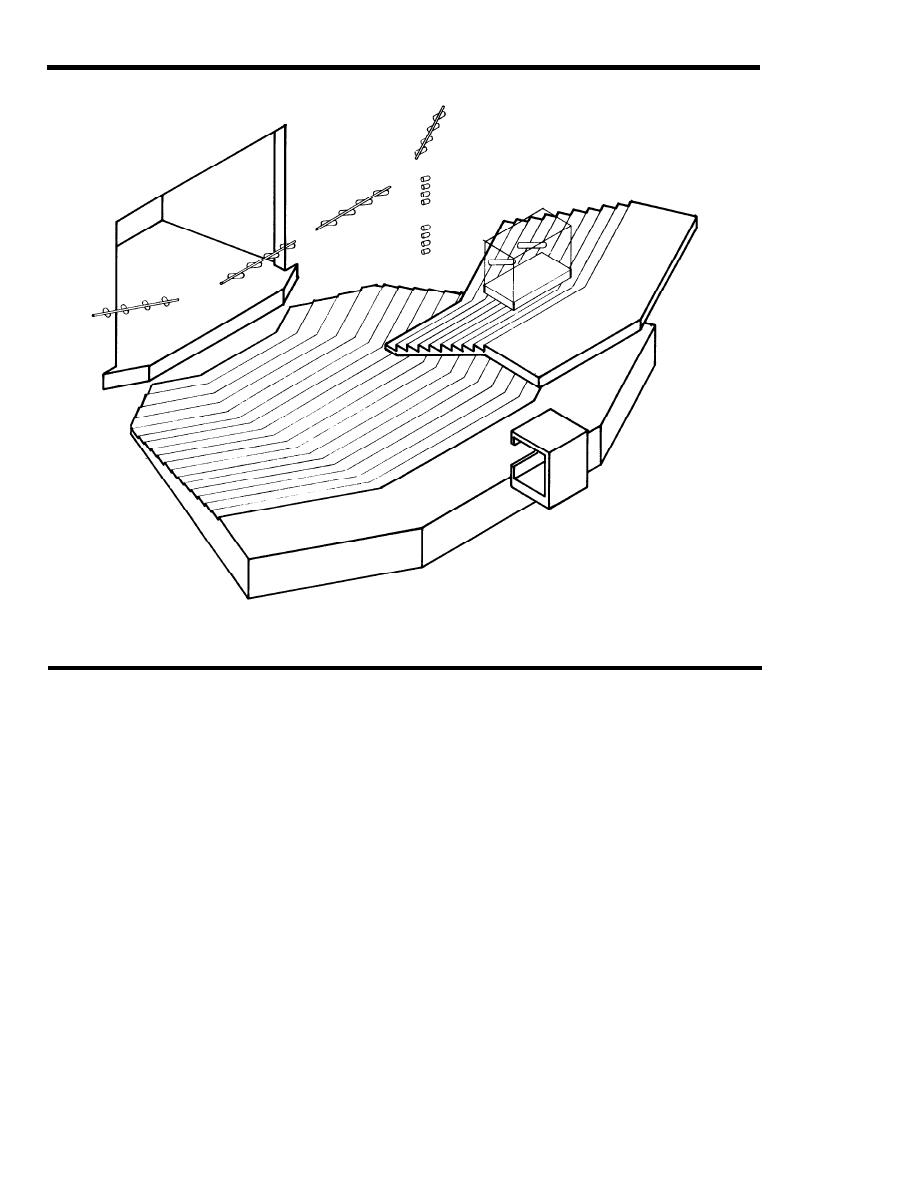
DG 1110.3.120
DESIGN GUIDE: MUSIC AND DRAMA CENTERS
JANUARY 1981
CHAPTER 3: DRAMA ROOM QUALITIES
DRAMA ROOM-SHAPED FOR VISION
F I G U R E 3-3.3
actors' voices should not be garbled by rever-
rections we are uncomfortab!e. Similarly, the
berations and echoes.
nonsimultaneity of observed action with per-
ceived sound can be disturbing. Dramatic impact
2. Ability to Hear
often depends on close timing and convincing
Speech sound levels must be high in every part
sound effects.
of the house relative to background noise. The
human voice is not especially powerful as a
5. Ability to Assess Projection and Hear Cues
Actors have hearing requirements, too. They
source without careful training, but the discrim-
need to hear cues in order to coordinate actions.
inatory powers of the ear are amazing. Forced
loudness is immediately discernible as unnatural.
They also need to estimate the intensity of voice
perceived by the audience. Hence, relative sound
3. Freedom From Distraction
levels and qualities should be the same on stage
While continuous noise sets the level against
and in the house.
which speech is heard, isolated, unrelated sound
6. Ability to Modulate Accompaniment
events and discontinuities in noise levels draw
attention to themselves and constitute distrac-
Musical accompanists need to hear the principal
tions and annoyances.
actors or singers in relation to their own sound
production as the audience hears it. At the least,
4. Congruence of Action and Sound
the conductor must be able to coordinate mus-
Both our ears and our eyes possess directional
ical accompaniment with other sounds leaving
abilities. If our ears and eyes disagree about di-
the stage.
3-14


 Previous Page
Previous Page
